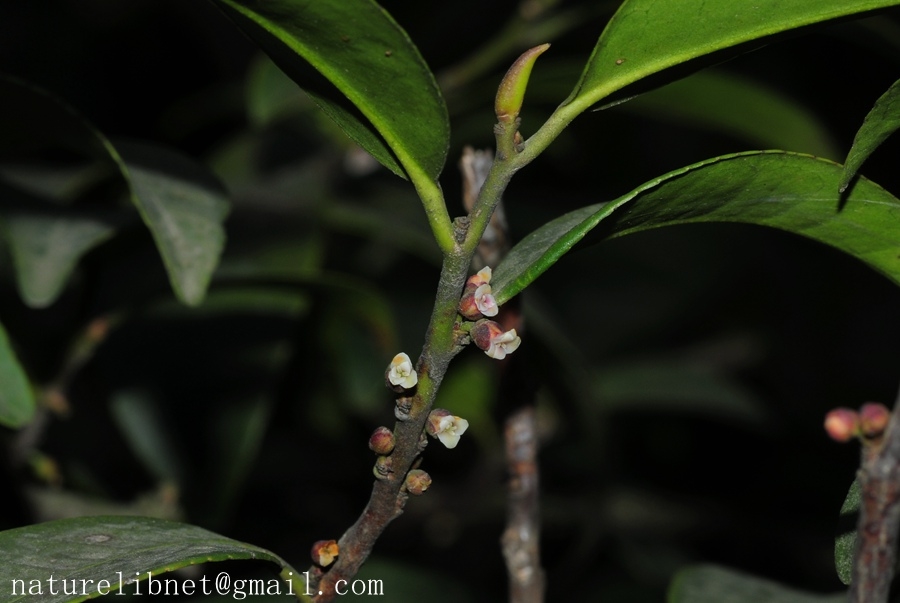- Scientific Name: Eurya hebeclados Ling
- Ref: Acta Phytotax. 1:208. 1951
- Chinese Common Name: 微毛柃 wēimáo∙líng
- Family: Pentaphylacaceae
- Genus: Eurya
- Distribution: Forests or thickets on mountain slopes; 200-1700 m. S Anhui, Fujian, N Guangdong, Guangxi, SE Guizhou, Henan, W Hubei, Hunan, S Jiangsu, Jiangxi, SE Sichuan, Zhejiang.
- Photo: 03/02/2013
Shrubs or trees, 1.5-5 m tall. Young branches grayish brown, glabrous or glabrescent; current year branchlets yellowish green to pale brown, terete, densely gray puberulent; terminal buds 3-7 mm, densely gray puberulent. Petiole 2-4 mm, puberulent; leaf blade oblong-elliptic, elliptic, or oblong-obovate, 4-9 × 1.5-3.5 cm, leathery, abaxially yellowish green, adaxially dark green and shiny, both surfaces glabrous, midvein abaxially elevated and adaxially impressed, secondary veins 8-10 on each side of midvein, slender, abaxially slightly raised, and adaxially obscure, base cuneate, margin serrulate, apex acute and with an obtuse tip. Flowers axillary, 4-7 in a cluster. Pedicel ca. 1 mm, puberulent. Male flowers: bracteoles orbicular, very small; sepals suborbicular, 2.5-3 mm, membranous, outside puberulent, margin ciliolate, apex rounded and mucronate; petals oblong-obovate, ca. 3.5 mm; stamens ca. 15; anthers not locellate. Female flowers: bracteoles and sepals similar to those of male flowers but slightly smaller and glabrous; petals obovate to spatulate, ca. 2.5 mm; ovary ovoid, glabrous, 3-loculed; style ca. 1 mm, apically 3-parted. Fruit bluish black when mature, globose, 4-5 mm in diam., with 10-12 seeds per locule. Seeds dark brown, reniform. Fl. Dec-Jan, fr. Aug-Oct. (Flora of China)
